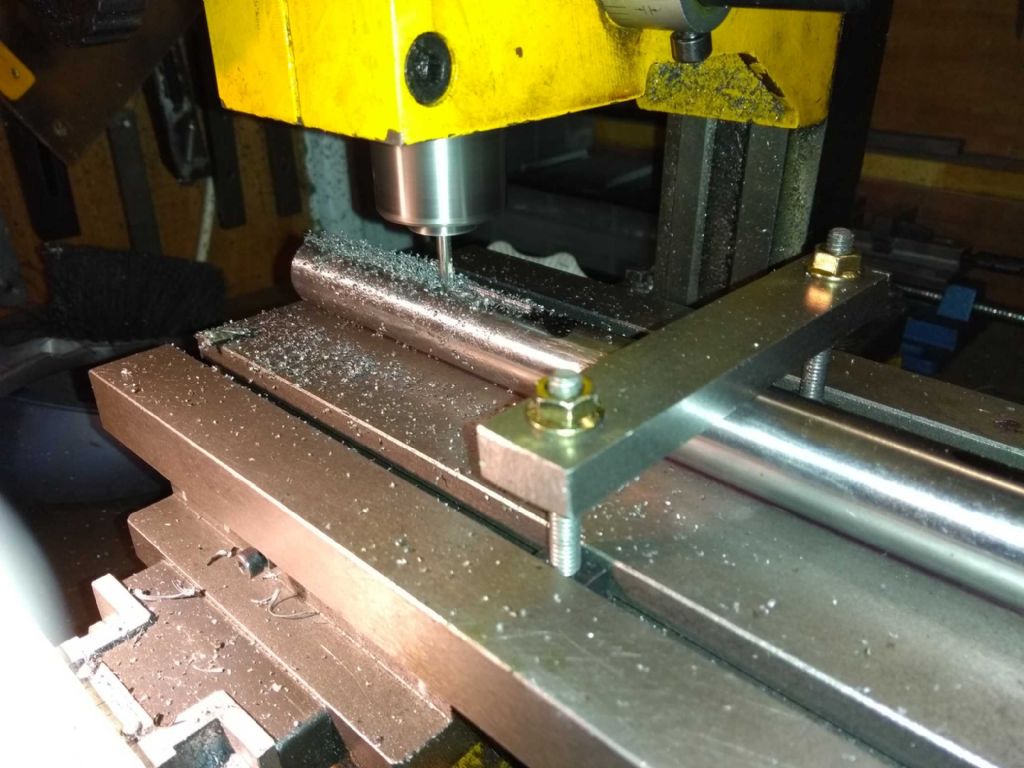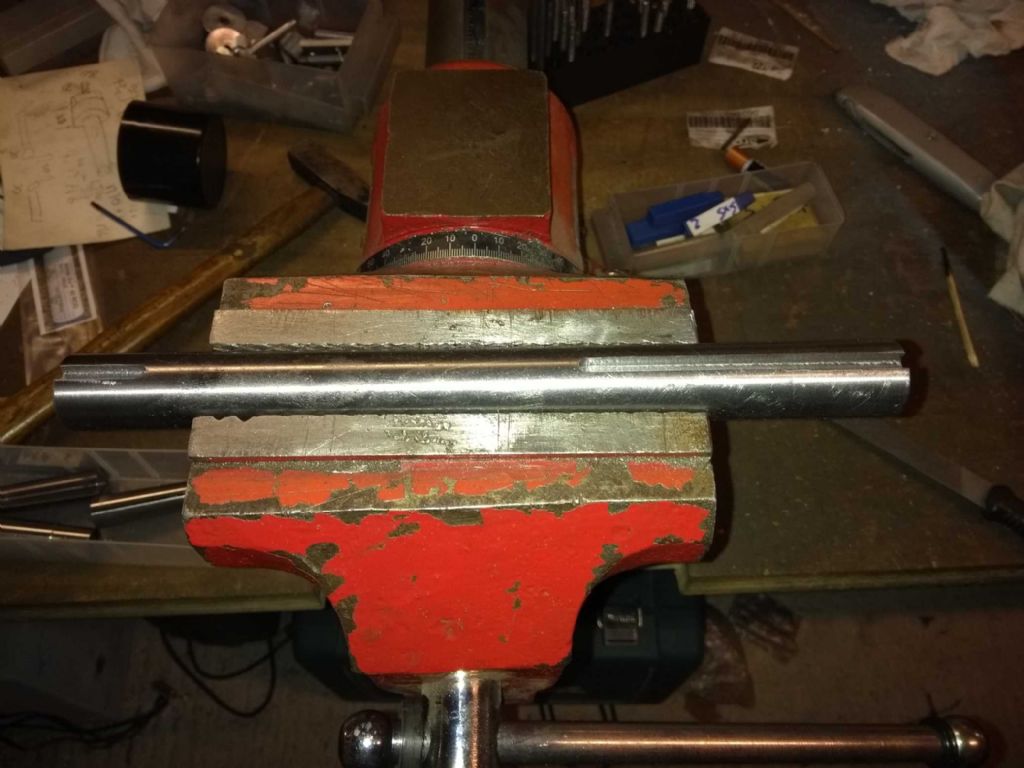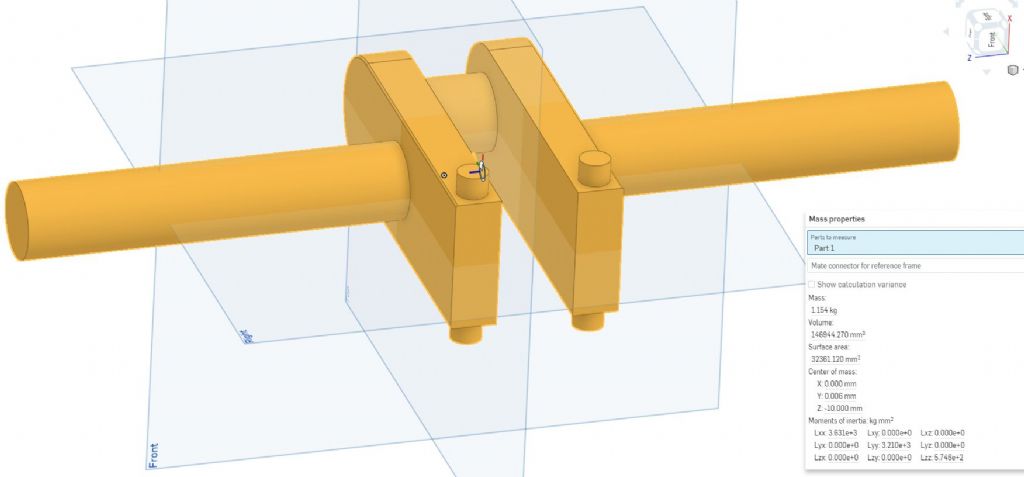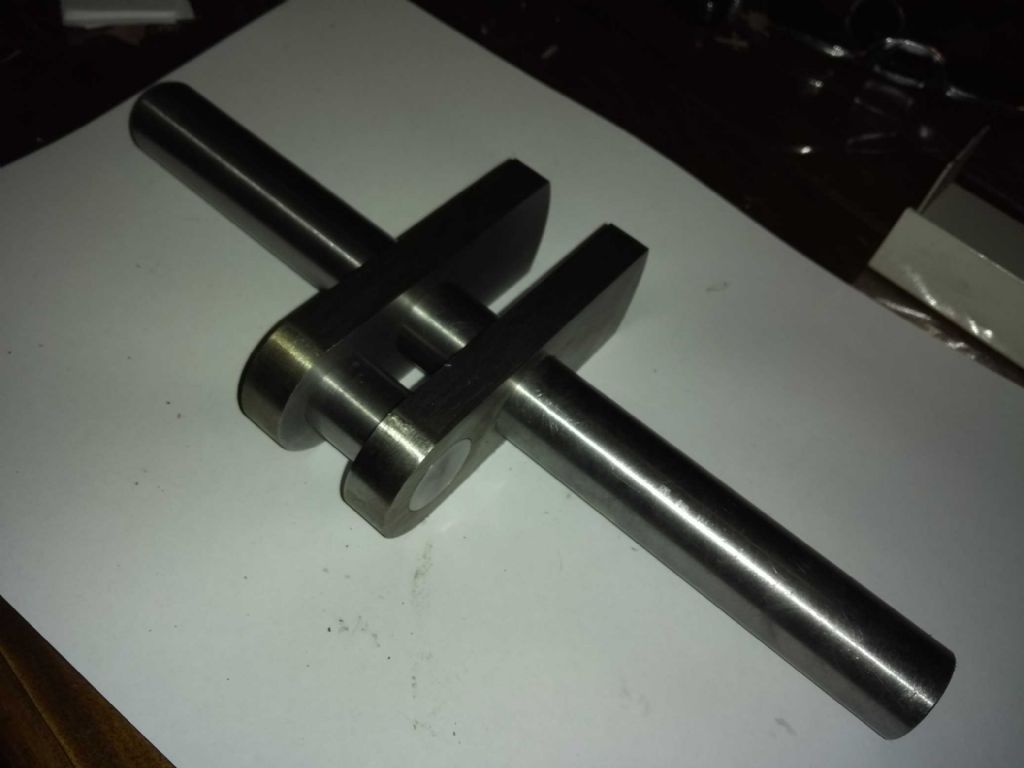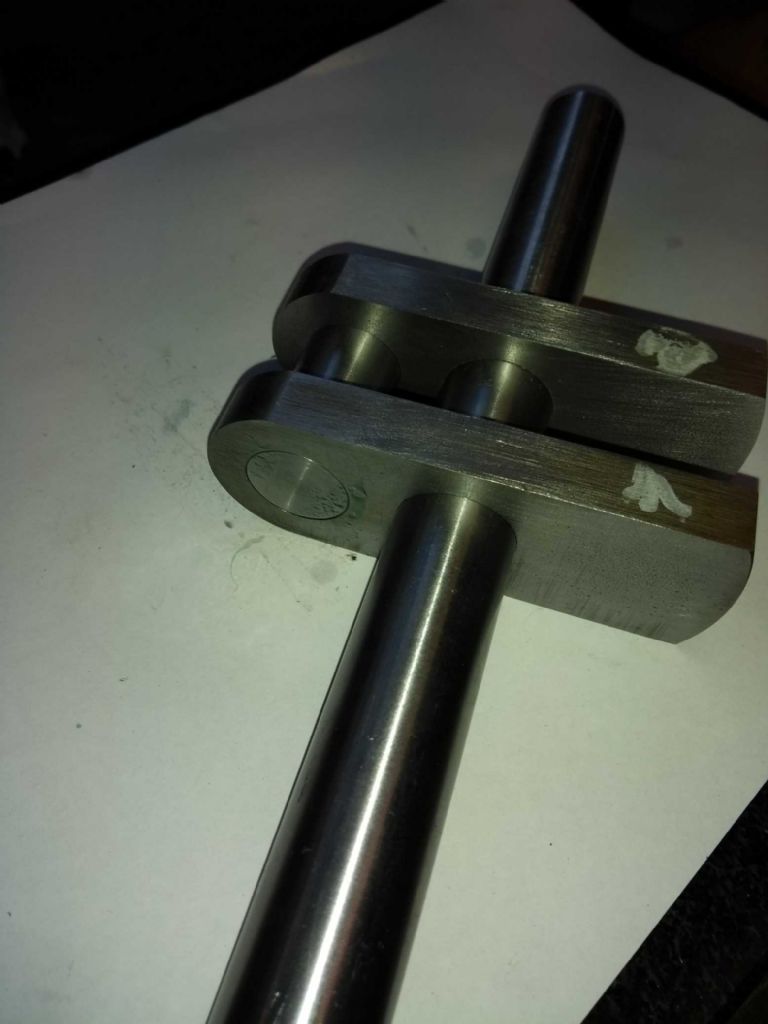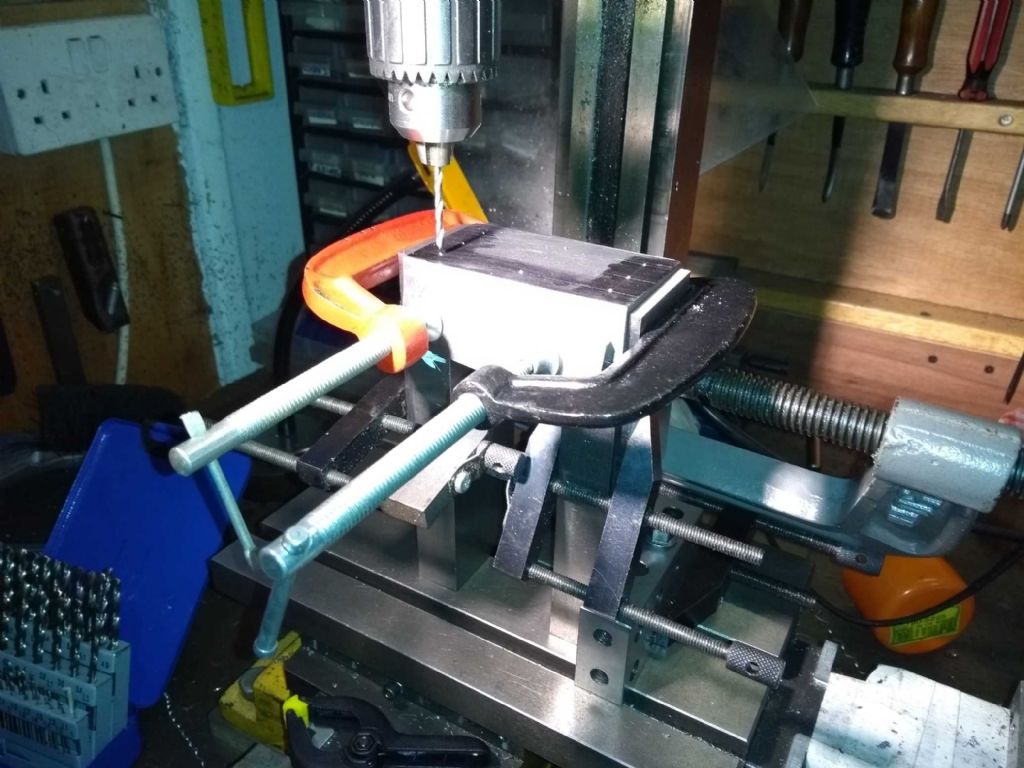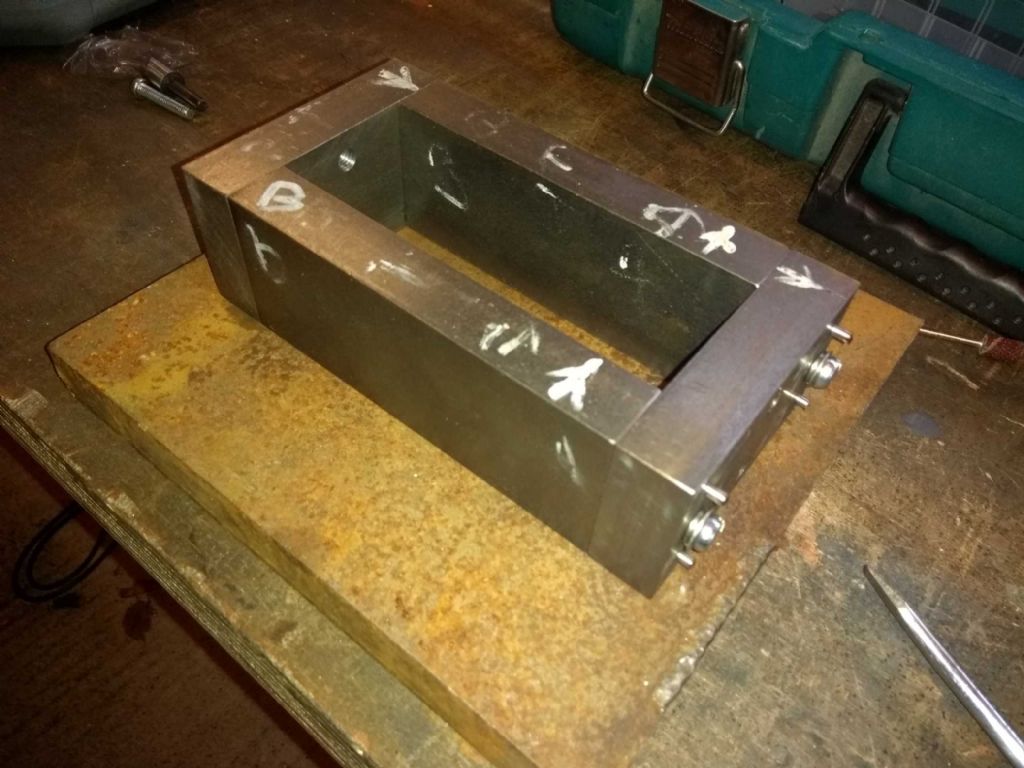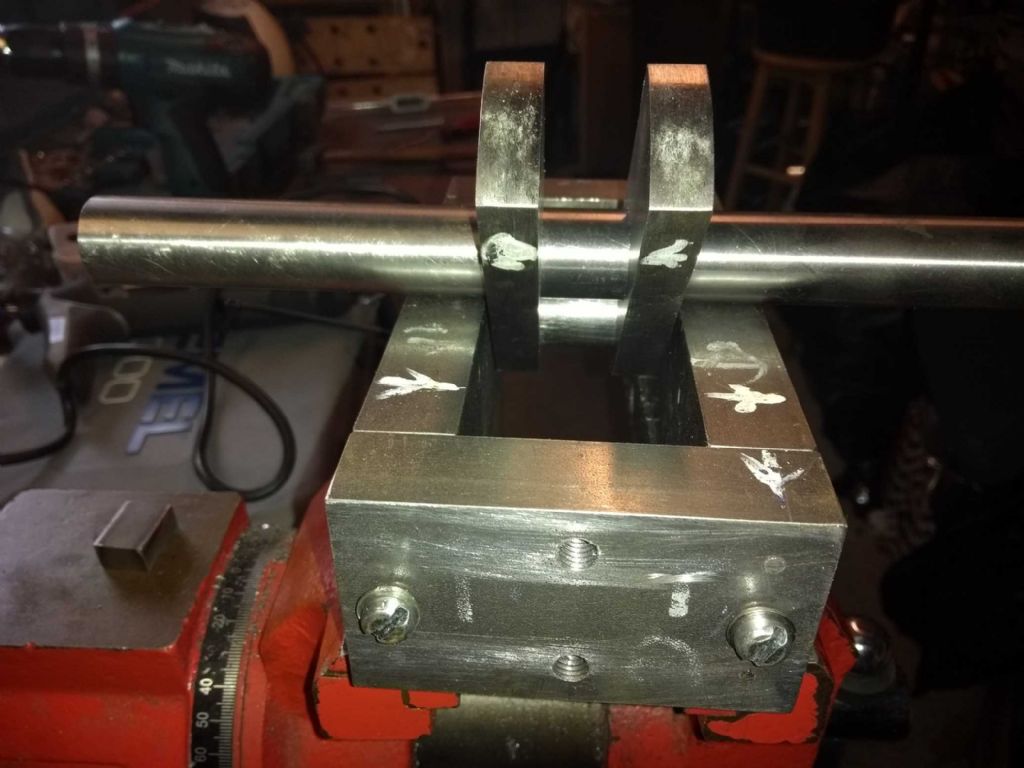So after a few digressions, a bit more work on the engine.
All that was left (for now) to do with the crank was to slap some loctite in and glue in the pin. I used a couple of bits of scrap to make sure that the pin shaft came to exactly the end of the journals. I was in a bit of a panic for this thinking I only had seconds to get it right, but I now gather setting (curing) time is more flexible.
As you can see I assembled it on a (protected!) surface table with the main shaft in place too (not glued yet) to make sure every thing lined up.

Next was to assemble the crank case. The original plan (well the last original plan) was to sliver solder it, but experiences elsewhere put me off that as an idea – there's far too much metal. I originally originally intended to just bolt it together, but felt that this was too inaccurate.
Instead, I decided to pin it in 4 places and secure with a pair of bolts at each end.
First task was to drill the pin / pilot holes. These at 2.8mm with a view to reaming to 3mm and using some silver steel I'd bought at a show 'because it might come in handy'. It has (OK, 18 months later, but..).

I thought about entitling this one, 'you can never have enough clamps'.
In fact this task took my little CMD10 right to it's limits.

If the crank case had been 5mm longer I would have been very hard pressed to do the drilling. Well done! you might say for such careful design work. Hmmmm. (blush – absolute luck!).
Next to ream out to 3mm. It turned out that I had only got 3mm in machine reamers and I actually don't trust any of my kit to be accurate enough to hold a machine reaminer and not overbore, so I got a 3mm hand reamer.
Next to pin, bolt and hammer in the pins.

And finally, here is the crank on the crankcase. Cosmetically – I still need to make the main bearings.

Next step is to try and make the main bearings. A bit daunting. I have a 50x50x65 lump of cast iron out of which these must appear. I'm planning in squaring it up in the lathe (partly because the mill will take forever and partly to extend the range of my fumbles). I'd like to cut it into 4 (two bearings in half) with a slitting saw, but I've had bad experiences with that. I suspect the mill is out of tram so that my be the first job tomorrow.
And before I fir it, I'm planning on facing the top of the crankcase to provide a good registration surface.
Iain
 Andy_G.
Andy_G.


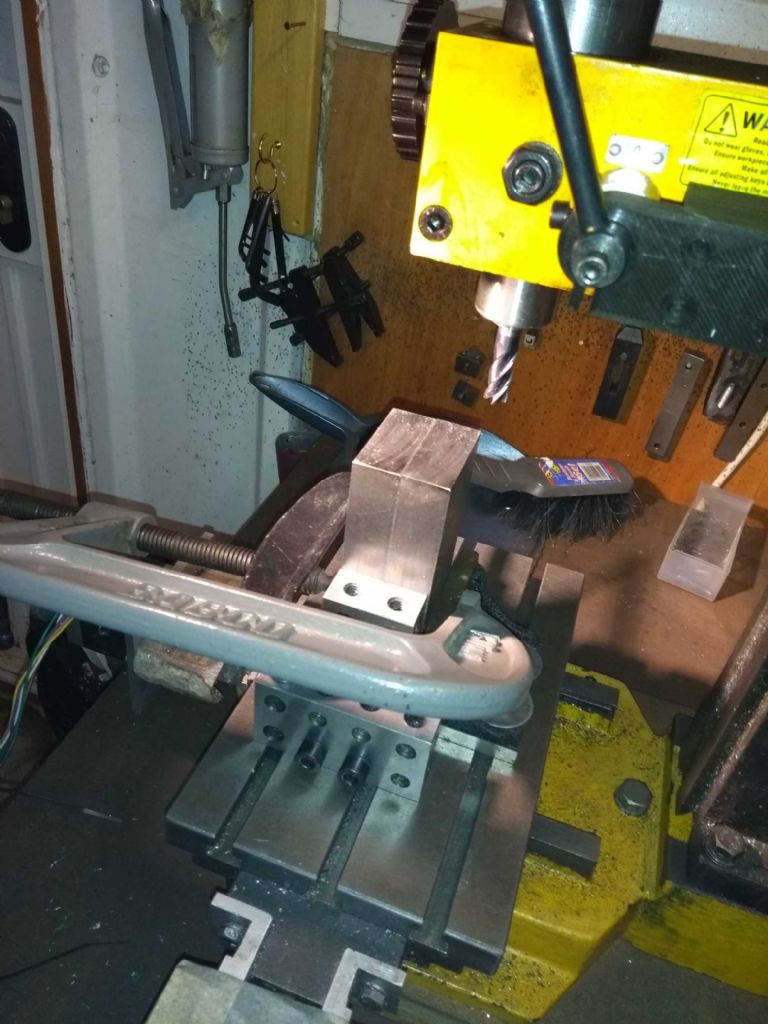

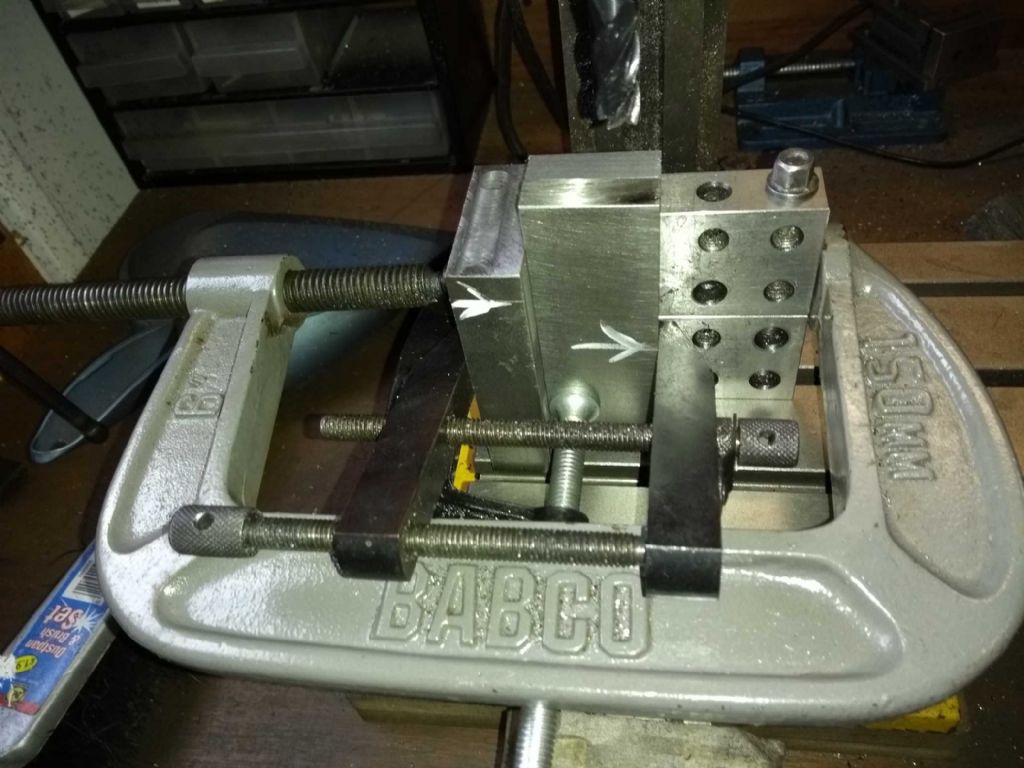
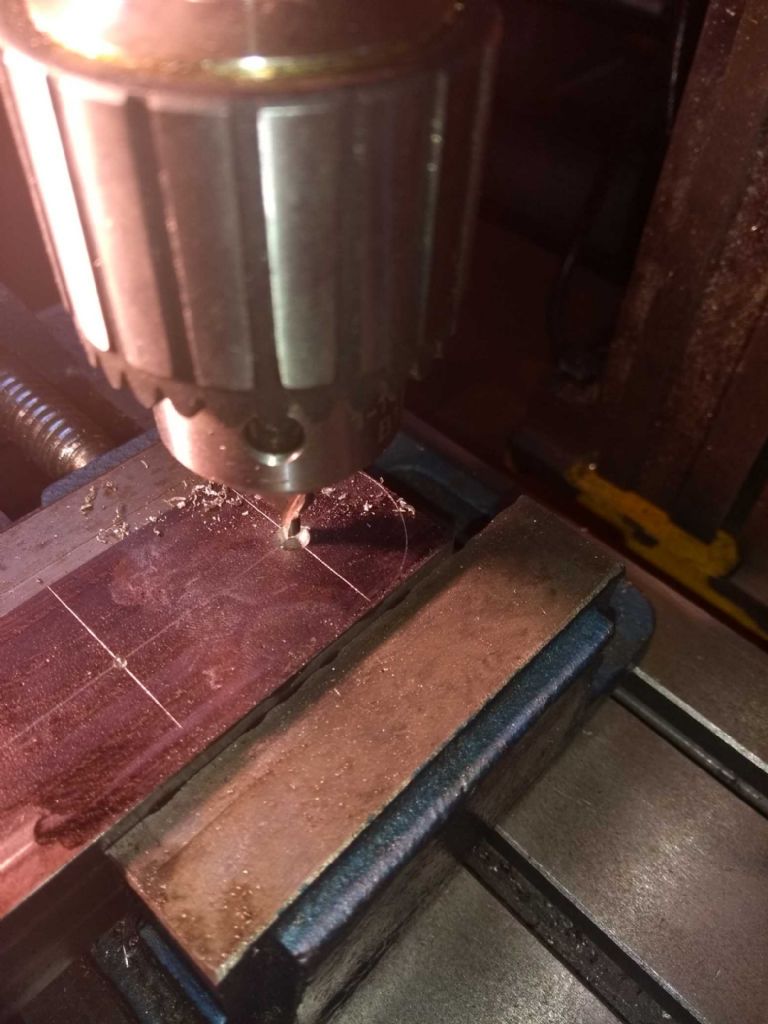


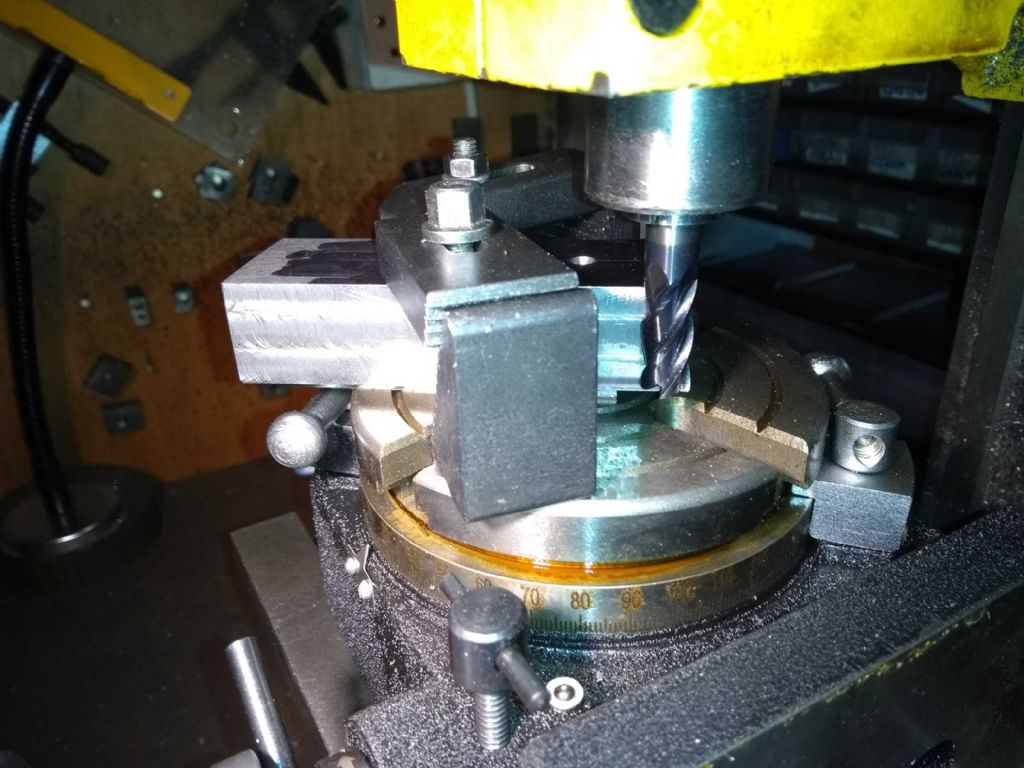
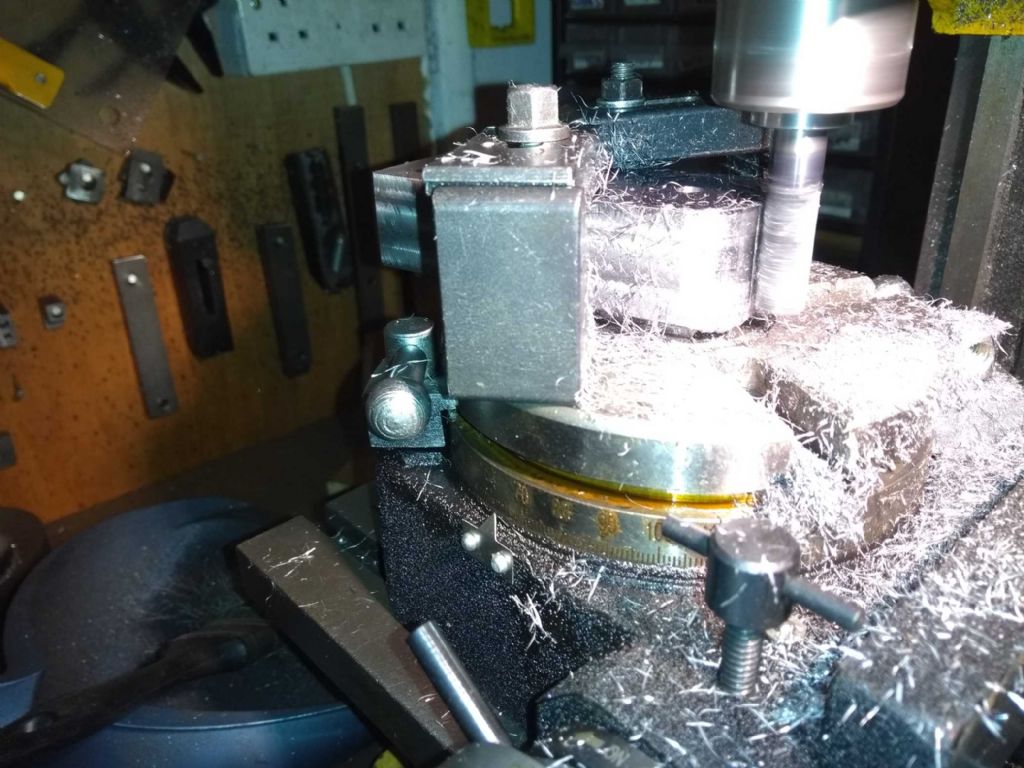
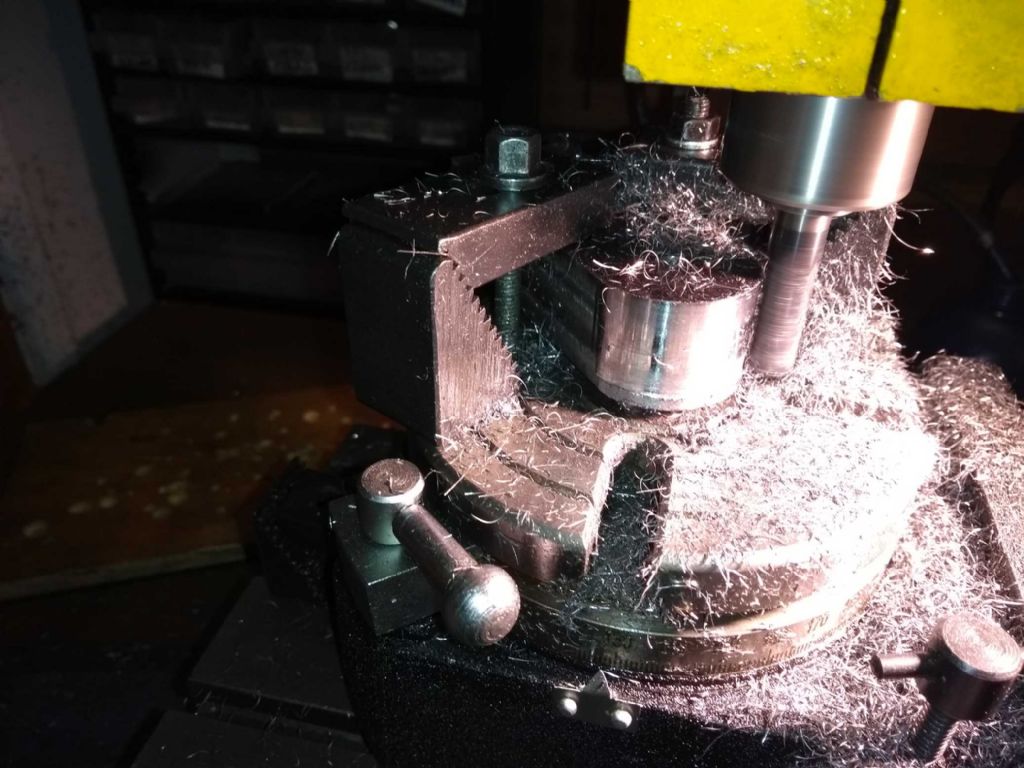
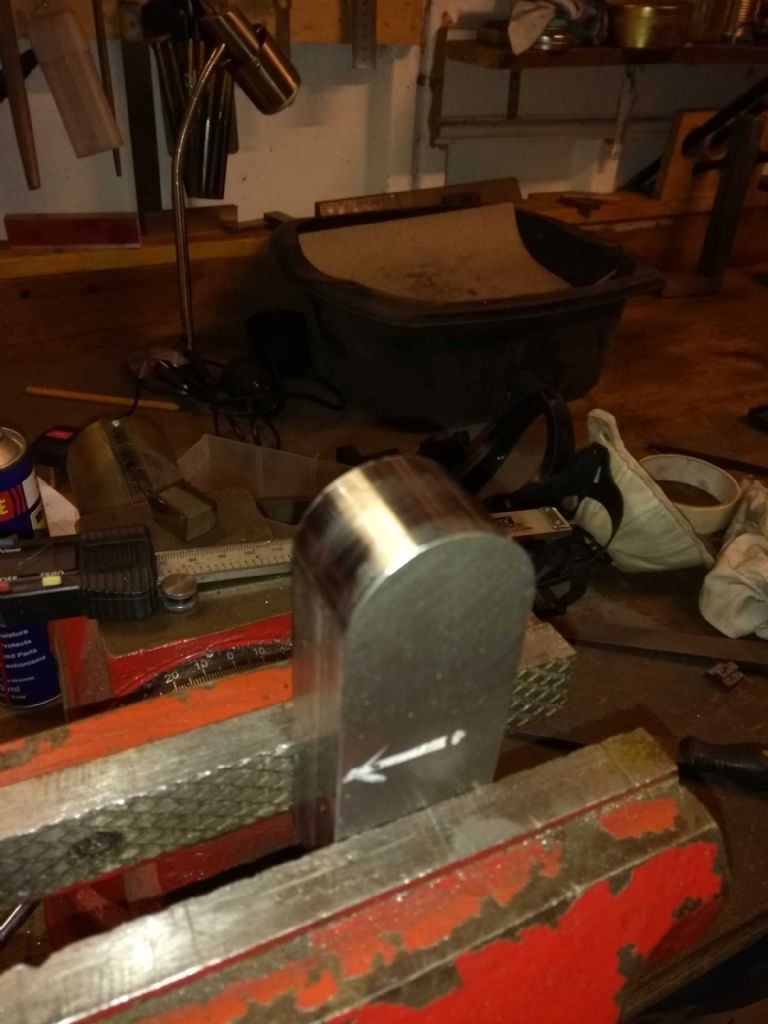
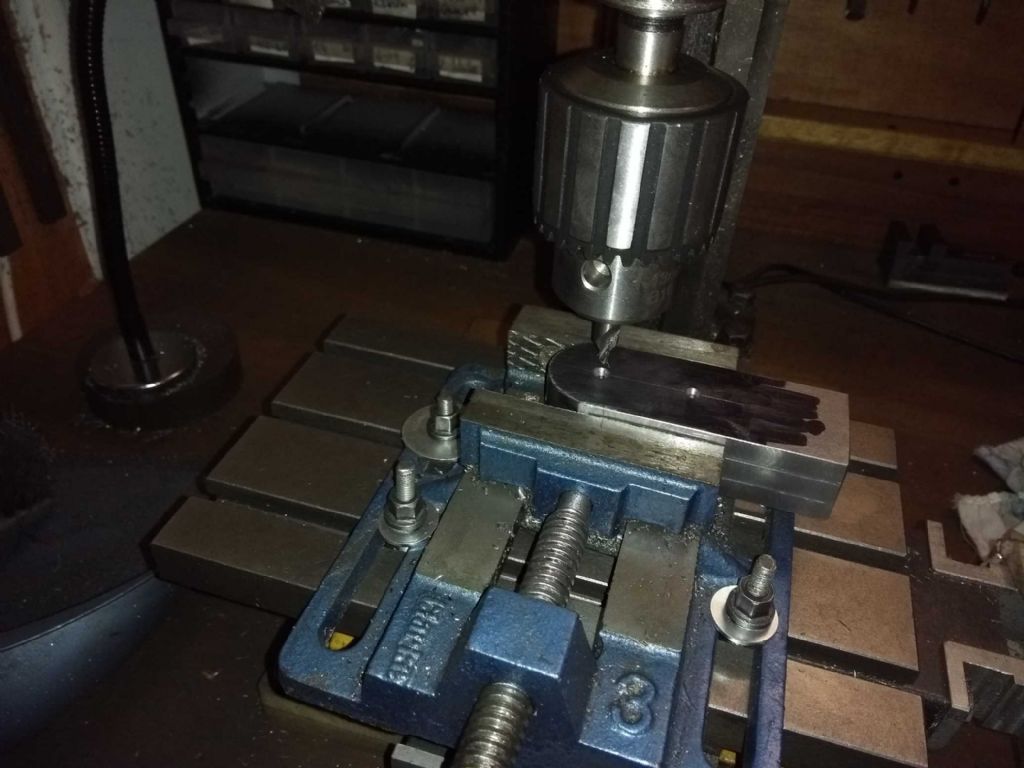
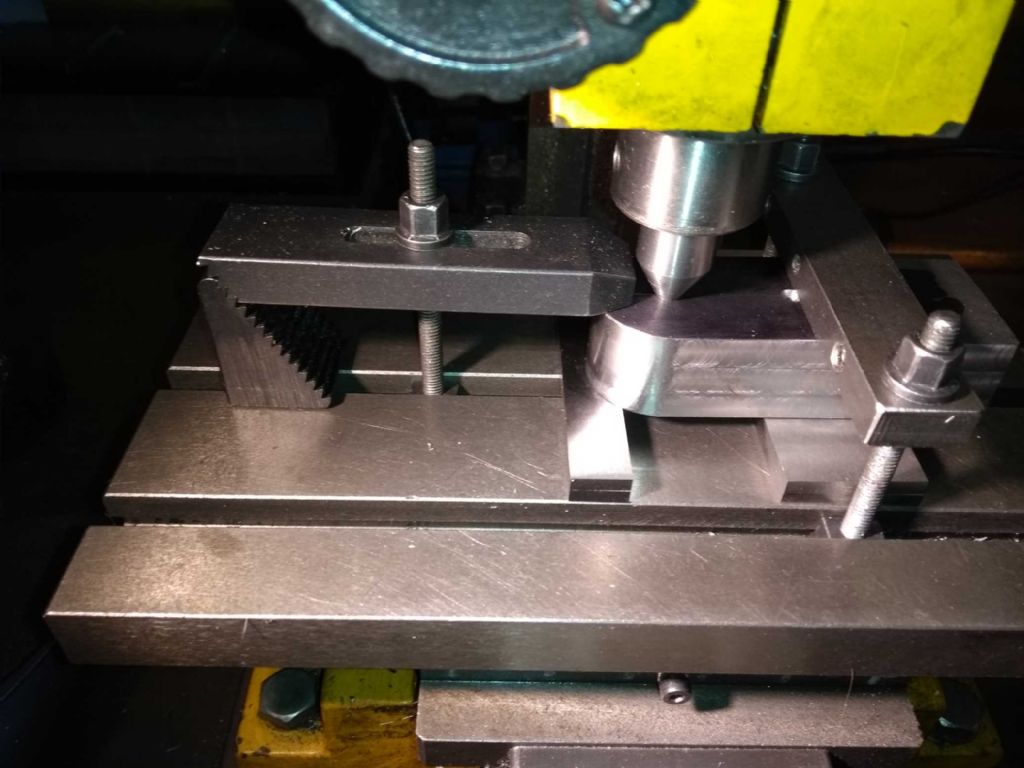


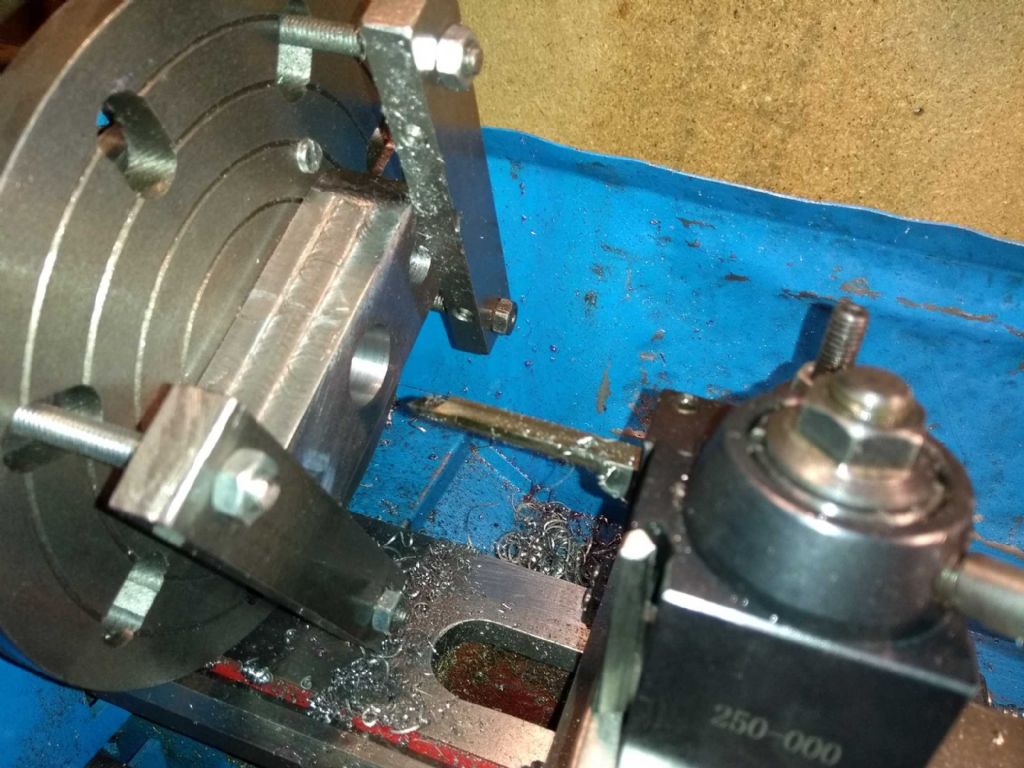
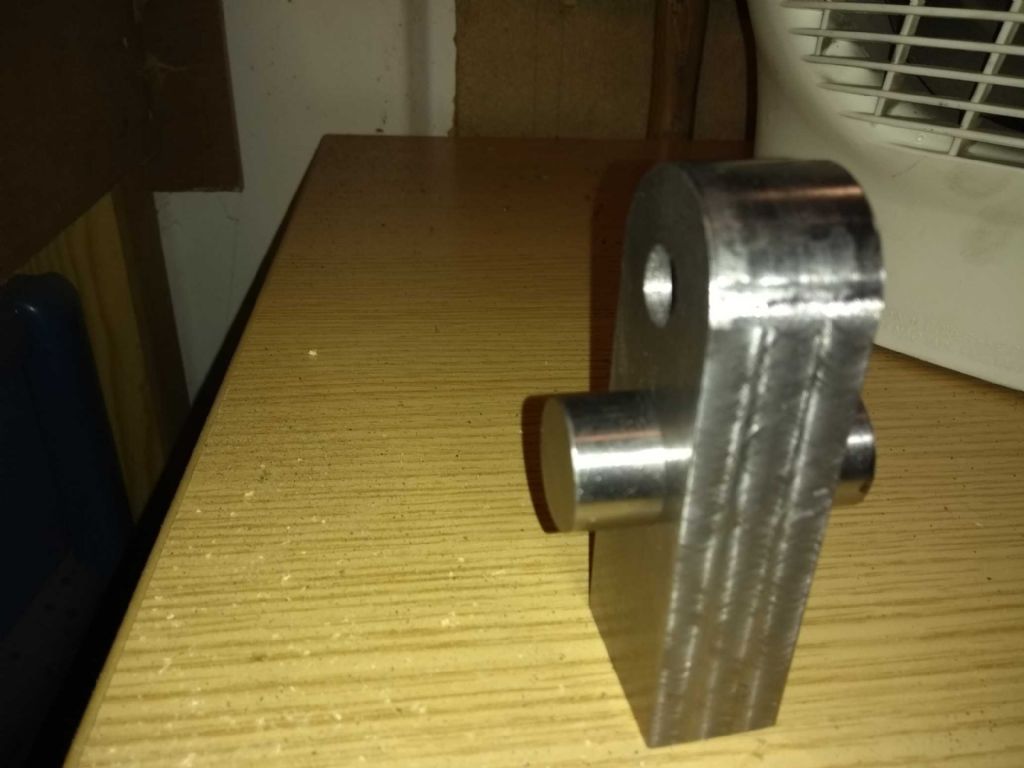
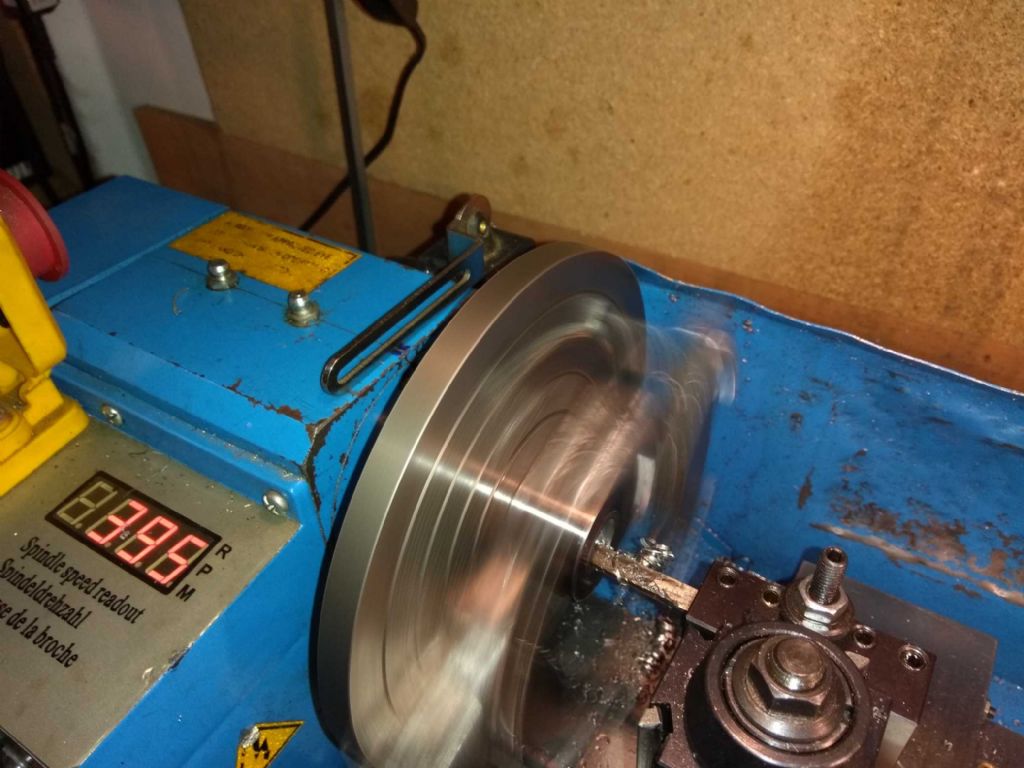
 . Corrected!
. Corrected!